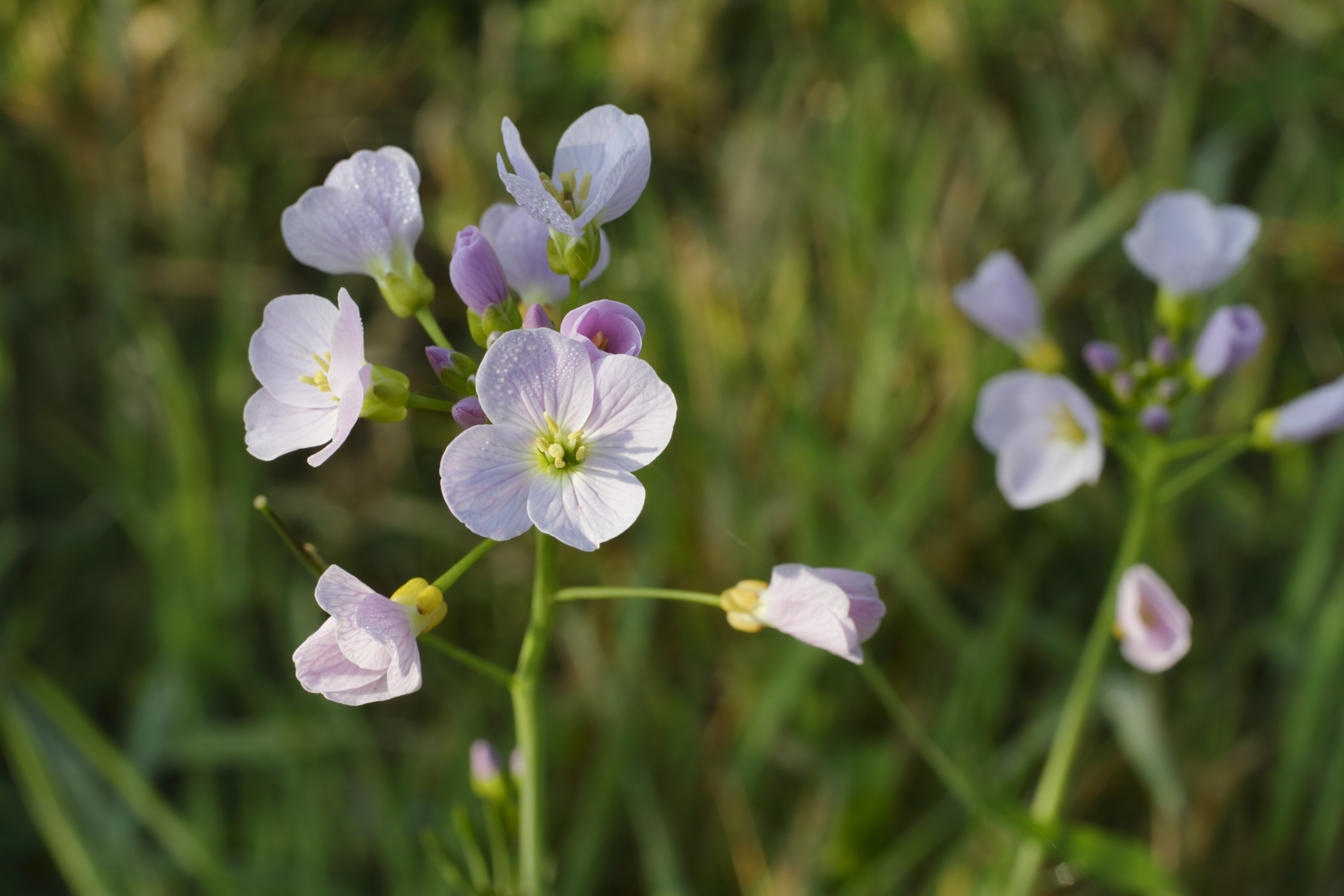Lady smock
(Cardamine pratensis)

Description
Cardamine pratensis, commonly known as the marsh marigold, is a perennial flowering plant that belongs to the Brassicaceae family. This plant is native to Europe and western Asia but has been introduced to North America, where it has become naturalized. The plant can grow up to 30-60 cm in height and has dark green leaves that are divided into leaflets. Taxonomy and Nomenclature The scientific name for marsh marigold is Cardamine pratensis, which was first described by Linnaeus in 1753. The genus Cardamine consists of about 200 species of annual or perennial herbs. The species name "pratensis" is derived from the Latin word for "meadow" or "pasture," reflecting the plant's preferred habitat. Description Marsh marigold is a low-growing plant with dark green, glossy leaves that are divided into leaflets. The leaves are arranged in a basal rosette, and each leaflet is toothed and slightly lobed. The stems are hollow and erect, and they bear one or two bright yellow flowers at the top of the stem. The flowers of marsh marigold are showy and attractive, with five petals that are arranged in a star shape. The flowers bloom in early spring, from March to May, and are pollinated by bees and other insects. The fruit is a long, narrow pod that contains many small seeds. Habitat and Range Marsh marigold is a wetland plant that is found in a variety of habitats, including meadows, marshes, swamps, and along stream banks. It prefers moist soils and is often found growing in areas that are inundated with water for part of the year. The plant is native to Europe and western Asia but has been introduced to North America, where it has become naturalized. It is widely distributed throughout Europe, from Scandinavia to the Mediterranean, and is also found in parts of Asia, including Siberia and China. Cultivation and Propagation Marsh marigold is an easy plant to grow and is a great addition to any garden or landscape that has moist soil. It can be propagated by seed or division, and it will self-seed in areas where the soil is consistently moist. To grow marsh marigold, select a site that receives partial shade to full sun and has moist soil. The plant prefers soil that is rich in organic matter and is slightly acidic to neutral. Plant seeds or divisions in the spring, and water regularly to keep the soil moist. Uses Marsh marigold has been used in traditional medicine for centuries, and it has a variety of medicinal properties. The plant is rich in vitamin C and is said to be a good remedy for scurvy. It has also been used as a diuretic, a laxative, and a treatment for rheumatism and gout. In addition to its medicinal uses, marsh marigold is also a popular ornamental plant. It is often used in water gardens and along stream banks, where its bright yellow flowers provide a burst of color in early spring. The plant is also attractive to bees and other pollinators, making it a valuable addition to any garden or landscape. Conservation Status Marsh marigold is a common plant and is not considered to be threatened or endangered. However, like many wetland plants, it is susceptible to habitat loss and degradation. As wetlands are drained and developed, marsh marigold populations are often lost or fragmented. Conservation efforts for marsh marigold should focus on protecting wetland habitats and preserving areas where the plant is found. This can be done through wetland restoration projects, land conservation programs, and public education efforts.
Taxonomic tree:







